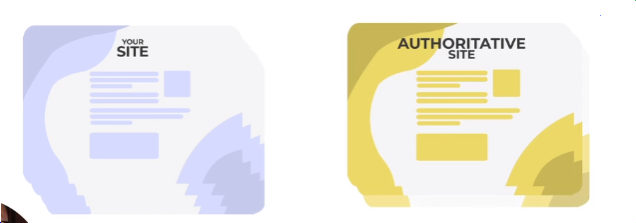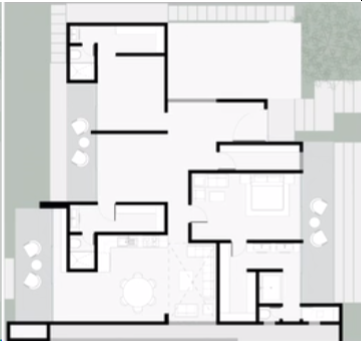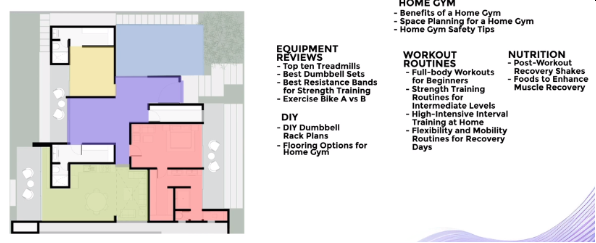Moving on from the last lesson where we spoke about selecting low competition keywords with adequate search volume, I need to mention an Introduction to Site Structure and Authority. When there are high competition keywords in your keyword research spreadsheet, it doesn’t mean that you should avoid them completely or eliminate them from your list. It only means that you should delay creating those pieces of content. Because, what’s important at the start, is to get traction, to get people to visit your site. And that’s the key reason for selecting keywords.
The Topic Gateway Model is a strategic approach to structuring website content, ensuring a seamless flow of authority from pillar pages to supporting articles.
Table of Contents
ToggleIntroduction to Site Structure and Authority
In reality, to achieve topical authority or to be seen as an authority in your niche, in the eyes of search engines and your audience. You’ve got to cover every industry or niche keyword. I’ll give you an analogy, imagine two artists standing side by side in a bustling place. One has many canvases with intricate details from corner to corner, every inch tells a story and anyone walking by can clearly see the depth and breadth of his skill. This artist, through consistent effort, has a visible testament to his expertise.
Now, beside him stands another artist, he claims to be a master painter, perhaps even more skilled than the first, but without any artwork on display, the crowd has no way to validate his claims. He might have created masterpieces in his studio but, in public, without tangible evidence his claims carry less weight. He could have used our introduction to site structure and authority.

And now, picture this, the same goes for your blog or website. Search engines look at the depth of content that you have produced to assess the topical authority of your site. It will compare, all you have created against more authoritative sites. Which is why you need our introduction to site structure and authority.

So, if you are only focussing on creating content based on low competition keywords, you will never get to the level of depth needed to be considered as an authority.
Silo Structure
This leads us to the concept of content hubs & silo structure. It sounds intimidating but these are simply concepts to help create the entire site structure or architecture.
It is what helps build a solid foundation of authority in your niche. And it helps your visitors navigate your site much more easily. And it’s better for SEO and hence, higher overall ranking for your site. A simple introduction to site structure and authority.
Think of your website as a home, and the content hub and silo structure represent the layout of the home.

Consider the main content hub as the, the central space where everyone gathers. Around the living room, you have other rooms like the bedroom, kitchen, study, etc. Each of these rooms represents a content hub which is a unique topic within your niche. And just like how each room in a house has items and furniture related to its function. Each content hub houses articles and content from the foundational entry level topics like the pieces of furniture, to more advanced topics like fine ceramic pieces.
In the context of “home gym” you have the living room which is the main content hub that covers “home gym basics”, topics like “Benefits of having a home gym”, “Space planning for a home gym”, “home gym safety tips”, etc.
Then you have another content hub that covers “Gym Equipment Reviews” such as “top ten treadmills”, “best dumbbell sets”, “best resistance bands for Strength Training”, “Exercise Bike A vs B”, etc.
These are all elements covered in the introduction to site structure and authority.
Then you have another room which is another content hub that covers “Workout Routines” that includes topics like “Full-body Workouts for Beginners”, “Strength Training Routines for Intermediate Levels”, “High-intensity Interval Training at Home”, “Flexibility and Mobility Routines for Recovery Days”, etc.
Another room for “Nutrition” with topics like “Post-Workout Recovery Shakes”, “Foods to Enhance Muscle Recovery”, etc.
The garage that talks about “DIY & Home Gym Setup” could cover topics like “DIY Dumbbell Rack Plans”, “Flooring Options for Home Gym”, etc.

Each room or contents will serve a different purpose and cover a different topic. The bedroom is for sleeping and the kitchen is for cooking. You wouldn’t put a stove in the bedroom, right! And at the same time, you wouldn’t shove junk in your kitchen and make it non-functional. Every room must serve its function and purpose and they should be easily accessible to everyone living in the house.
The same goes for these content hubs. You wouldn’t have an article on “Post Workout Recovery Shakes” in “Workout Routines”, it would be illogical. Also, though they are in separate content hubs, there will be interlinked articles that provide further details or naturally guide a reader to another related topic.
For Example, an article in the “Workout Routines” such as the “Strength Training Routines” article might link to an article in the “Equipment Reviews” hub about the “best resistance bands for Strength Training”.
This interconnected structure not only makes the website easier to navigate but also enhances its SEO potential by highlighting its main functions and relationships.
SEO in action with the introduction to site structure and authority.
Conclusion
To conclude this introduction to site structure and authority. This is the overview and purpose of what content hub and silo structures are. I just need to mention one more thing. If you already have a website where the articles are ranking on the search engines. You have maybe 30 published articles. You SHOULD NOT change the site structure of your site.




